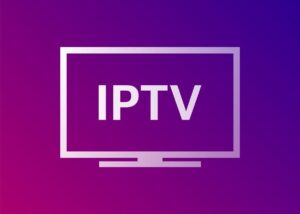An electronic program guide (EPG) is a menu-based system that displays scheduling information for past, current and upcoming broadcast programming. It can be found on televisions and in digital video recorders (DVRs).
Media Distillery and Gracenote have joined forces to deliver a powerful new solution that optimizes EPG utility for pay-TV operators. The easy-to-implement offering uses a single API to ensure accurate start time listings.
Non-interactive EPG
A non-interactive EPG simply displays a list of programs with their times and channels on the screen. This type of EPG can be found on many television sets, cable set-top terminals and VCRs. The program schedules are typically displayed as a scrolling text over video images or as a series of digits that slowly roll across the screen. The EPG can also be integrated with the TV and DVR to record programs and allow you to view and select programs while watching TV or a movie.
A more sophisticated type of EPG is the interactive EPG or IPG. IPGs allow viewers to navigate scheduling information menus by time, title, channel or genre. The IPGs are generated within the local receiving or display equipment from raw scheduling data sent by individual broadcast stations or centralized scheduling information providers. The IPG can be controlled by a keypad, computer keyboard or TV remote control.
The EPGs may include a calendar function that allows subscribers to set reminders for upcoming events and a search engine that lets users find specific shows, movies or channels. Some IPGs can also keep track of the viewer’s favorite programs, offer a “reminder” service and automatically record those shows for the subscriber. They may even restrict access to channels that the user does not want the kids to see. IPGs can also be used to set parental controls and to offer a pay-per-view service.
Interactivity and the EPG
A new generation of electronic programming guides has been introduced that is more like a personal assistant than an electronic program guide. They can keep track of the viewer’s favorite programs, provide reminders, offer a search engine and recommend programs that might be interesting. The IPGs can also be integrated with DVRs to allow the user to control their home entertainment system with a single device.
IPGs are also allowing the viewer to take advantage of the latest Internet technologies. Increasingly, these applications will be able to deliver content and services that are not available from traditional broadcasters. This will require a much more robust Internet protocol (IP) architecture that is capable of supporting the large amount of data that IPGs will be generating and transmitting.
The PDA is configured with a table that identifies each source of EPG data. The EPG data synchronization engine 86 scans each source at 214 to retrieve a corresponding identifier, viewing level and timestamp of the available program entries. The engine then builds the EPG content directory 88 as shown in FIG. 6A. The retrieved EPG content is then synchronized with the display of the media delivery device 12 as illustrated in FIG. 7B at 220 by constructing a hyperlink on the media delivery device screen to the next level of EPG content. If desired, supplemental EPG data can also be retrieved from other disparate sources over the Internet or other communication networks. This supplementary EPG data can be stored at the device or delivered to a remote location for storage therein.

